(Map showing Trieste in the extreme NE of Italy--just a few kilometers from Slovenia, and only a few more to Croatia)
Fortunately for us, Trieste is a popular-yet-out-of-the-way enough place that it is the destination of a direct Ryanair flight from London Stansted. Now, everyone always talks about how terrible it is to fly with Ryanair, but the whole reason I could afford to go to Italy was that my entire round-trip flight cost less than $100. Plus, had I not been on my particular flight to Trieste, I might not have appreciated the trip so much because I would have missed out on seeing my life flash before my eyes during the landing. (Seriously. We veered sideways so substantially that I truly thought we were going to lose control.) After an experience like that, you are so grateful to be alive that pretty much nothing could ruin your trip. Thanks, Ryanair!
(Who says Ryanair doesn't provide free food?)
Actually, it would have been a very pleasant trip anyway, primarily because of how easy everything was. Take, for instance, the public transportation system. Sasha and I had no problems finding the bus stop at the airport and nabbing two seats just before a flood of people arrived and battled each other for a place to sit. Likewise, later on in the week, we had no difficulty purchasing tickets for the local bus service and getting ourselves to the beach and back. In fact, our obvious familiarity and comfort with the bus system even inspired an Irish tourist to ask us for assistance.
Another great thing was our hotel. It turned out to be just a stone's throw from the bus station, and, because it was located right on one of the main roads through town (the Corsa Cavour), it was also pretty convenient for getting to all the other points of interest, as well--including shops, restaurants, the oceanside footpath, and all the major cultural/historical sights. Plus, it had a complimentary hair dryer in the bathroom, and you can't ever argue with that.
(The cheerful facade of the building across from the NH Hotel Trieste)
Perhaps the best thing was how easy it was to walk everywhere. That was particularly helpful for me, since that's pretty much all I did for the 5 days I was in town. Once Sasha made his way up to the university for the conference, I would head out and traipse around town, sometimes with a destination in mind, sometimes to look for good photography opportunities, and always to enjoy the novel feeling of sun and warmth on my skin.
(So this is what summer in Europe is supposed to be like?!)
In fact, since Sasha had to go register for the conference shortly after we arrived in town, I started my walking tour of Trieste pretty much right away--after trading in my jeans for a pair of shorts, and slathering some sunscreen on my face. It was about 5 PM when I headed out, which might seem a little late to begin sightseeing. To be honest, though, I found this to be the nicest time of day, since the temperatures were less forbidding, and the entire city was suffused with a pleasing orange glow. (In fact, if you visit Flickr and look through my entire slideshow of trip pictures, you'll notice that a very high proportion of them were taking during the long, slow sunset.)
Evening was a particularly fantastic time to see the Palazzo del Governo, one side of which faced the Piazza Unita d'Italia, and another of which overlooked the Adriatic. The setting sun beamed directly onto both of these facades and made the gold decorations glitter and sparkle in a magical way.
(The Adriatic side of the Palazzo del Governo)
Looking at this sight, it is hard to believe that the Lonely Planet guidebook describes Trieste as "grand but not spectacular, melancholy but not sad, historic but not legendary." It also goes on to claim that Trieste "rarely inspires on first viewing," and that it "is one of Italy's most cryptic cities." Personally, I would describe it as "charming, in an understated sort of way," but I guess my point of view is probably influenced by the fact that I've never been anywhere else in Italy; my opinions are not swayed by expectations set according to the standards of places like Venice, Naples, or Rome, all of which would surely out-compete Trieste in many ways.
(The Arco di Riccardo--an old town gateway dating back to 33 BC. The Coliseum it is not, but still--it's standing after 2000 years, which makes it pretty awesome in my book.)
Sometimes I felt as though the entire city was under construction, since everywhere I looked there were safety fences and orange cones and cranes and forklifts. There were also many places--including some right along the main drag--that were badly in need of structural or decorative makeovers. Those sorts of things never really bother me, though, because they just make a place seem more genuine. Nothing was glitzy or touristy or overwhelming; it was just a pleasant place to go and get a taster before ordering the Italian main course. I suppose this sort of evaluation is to be expected from a practical Midwest girl who has never been all that impressed with the supposed glamor of big cities; also, I kind of like the whole "urban decay" vibe.
(View down the Grand Canal towards the Chiesa di Sant'Antonio Taumaturgo. Much of this area of the city was designed in the 18th century "at the behest" of Empress Maria Theresa.)
Interestingly enough, despite what I've just said about using Trieste as a way to become familiar with Italy in general, it is, in many ways, pretty un-Italian. Originally named Tergeste, it was established in 178 BC as a Roman port town. Its riches attracted the attention of the Goths, Byzantines, and Lombards, then finally the Venetians, who captured the city in 1202. After winning back its independence, Trieste then turned around and voluntarily welcomed the rule of the Austrians from 1382 onwards. Thanks to this final development, many structures in the city--including the Grand Canal shown above--were commissioned and/or financed by various members of the Austro-Hungarian empire. Thus, although there are some unmistakably Italian touches around town, there is also a lot of architecture that has a more Germanic look. During the 18th and 19th centuries, the intense intellectualism of northern Europe also had a big impact on Trieste, since many academics and artists came to the town to work on their various projects. Notable visitors include James Joyce and Italo Svevo, both of whom are commemorated in town in statue form.
(Life-size statue of James Joyce, located on the Via Roma bridge over the Grand Canal)
Because of Trieste's long and interesting history, it is chock-full of museums, some of which are rated very highly. I did not go to any of these. It was just too nice outside, and the allure of the Adriatic was too strong. I wandered up and down the waterfront footpath, occasionally stopping to photograph interesting people and make minor detours down nearby side streets.
(Successful fisherman extracting his hook from a rather small fish)
During my meanderings, I saw first-hand many of the things that the Lonely Planet guide mentioned in its "Day in the life of an Italian" section. For instance, the book went at length to explain the concept of fa la bella figura, or "cutting a fine figure." Basically, the idea is that Italians want everyone and everything to be as aesthetically pleasing as possible, and so they take pains to achieve this. The is one of the reasons why I kept noticing that seemingly nobody--except the tourists--looked unkempt; also, almost none of the women wore flat-heeled shoes, and I repeatedly observed them critically eyeing my flip-flops. I got another taste of the bella figura attitude when I went into a shop to buy my father a birthday present: The sales associate meticulously bagged and packaged and wrapped and decorated the gift before allowing me to leave the store with it.
Another thing I saw in action was the demographic shift in Italy. Although Italy is decidedly Catholic, only 15% of the population regularly attends mass. Indeed, I noticed that churches were routinely empty; in fact, when I went up to visit the Basilica di San Silvestro, I not only found it to be completely shut in the middle of the day, but also heavily graffitied--in a way that suggested it had not been open for a while.
(The Basilica di San Silvestro. It supposedly has a "tiny painting by Sassoferrato of the Madonna della salute," but I was unable to go inside and see it.)
I could also see signs of the heavy influx of immigrants--particularly Romanians--into the country. In a nameless park near the Piazza Tommaseo, I spied an older woman who I assumed to be an immigrant gypsy; later on, I saw her again along the waterfront.
(Small world!)
One thing that surprised me was the number of large families I encountered. According to the statistics quoted in the Lonely Planet guide, birth rates in Italy are among the lowest in Europe--so low, in fact, that the government recently offered a 1000-Euro incentive for women to have babies. Families in which many births are occurring are, reportedly, more likely to be immigrant. However, I saw lots of 3- and 4-children families that looked and sounded pretty Italian to me. This may have been a result of the fact that Trieste is a family-friendly tourist destination and so happens to have a large concentration of kiddies.
In terms of actual landmarks, one of my favorites was the Chiesa di Santo Spiridione, a Serbian Orthodox church built in 1868. This was one of the few churches I went into before being scared off by the signs which seemed to indicate that no tourists were allowed. These were present on nearly all the churches I passed, and I couldn't tell if the stricken-through people in shorts and t-shirts indicated that no tourists were allowed ever or just during actual religious ceremonies. There certainly were tourists inside, but I was reluctant to accidentally become that annoying American who disrespects other cultures/religions.
(Chiesa di Santo Spiridione)
The interior decorations of the Chiesa di Santo Spiridione were breathtaking. I wasn't sure if photography was allowed, so I sneakily used my iPhone to quietly grab a few shots of the ornate walls and ceiling. I realize this may sound hypocritical given what I've just said about being disrespectful, but I like to think of myself as an ambassador, using my photography to spread goodwill towards the Chiesa. Also, it was just really pretty, and I wanted a picture.
(Gorgeous--so inspiring it could make a believer out of anyone. Almost.)
Santo Spiridione was incredible both inside and out, and I loved wandering along the Grand Canal in the evening and seeing the church's domes rising up into the city skyline. The swifts seemed to love it as well, judging by how much they swooped around it.
I also enjoyed visiting the Roman Theater, which was built between the 1st and 2nd centuries AD. Amazingly, there are actually still performances held there during the summer; I guess you can afford to be cavalier about 2000-year-old ruins when they are as common as they are in Italy. As with the Chiesa di Santo Spiridione, I wandered past the ruins at all hours of the day and enjoyed how their "feel" changed depending on the lighting and presence/absence of other people. One evening, I discovered that there is a black cat who likes to frequent the theater and stretch out on the rocks to absorb their heat after the sun has gone down; the next night I encountered it again and even got a little cuddle.
(Cats like shoes, too)
Sasha and I did actually do a couple of planned activities--I didn't spend all my time meandering around aimlessly. For one thing, we went to visit the Acquario Marino (Marine Aquarium), which was a tad depressing because of its small size and cramped quarters. One thing I did like was the way that the "Adriatic tanks" (as opposed to the ones with tropical fish) were arranged and decorated according to where in the ocean you could expect to see particular species. In the tank with harbor species, for instance, there was faux garbage, while one of the deeper-sea tanks featured an old amphora. Some might argue that the displays weren't "natural" enough, but I'd say they were pretty accurate; the Mediterranean is brimming with spilled cargo from wrecks both new and old.
Unexpectedly, the upper floor of the aquarium had a large collection of European reptiles, which was eye-opening; neither Sasha nor I realized how many native snake species there were--some quite intricately patterned. My favorite display, though, was the fantastic collection of shell art arranged in a two-sided cabinet painted in bright turquoise:
(Least biological display ever found in any type of natural history museum)
The pieces in there were absolutely hideous, and, other than being made of shells, had absolutely nothing to do with wildlife. I can't imagine making any of this, buying it, or showing it off; as a result, I found this kitschy collection to be stupefyingly wonderful.
We also experienced the marine environment first-hand, by going to the "beach." I put this in quotation marks because the word is a bit of a misnomer. There is no sand anywhere to be seen, and, in fact, there are few places where you can walk out into the water. That is both because the shoreline is incredibly rocky, and because much of the coast is lined with a stone retaining wall--a retaining wall that is very wide and gives visitors ample space to spread out towels and lie in the sun. In the occasional spots where the shore is lined by small pebbles instead of massive boulders, there are little staircases allowing you to descend from the wall and stroll out into the water; elsewhere, there are ladders so that you can just jump in straight from the cement and then climb back out later.
It is unusual, but not as unusual as the fact that, along much of the coast, the road runs right next to the other side of the retaining wall. This means that when people talk about going to the "beach," what they really mean is that they are going to the "sidewalk." Even better is the fact that some of the female sunbathers go topless, and so you can find yourself driving or walking down the road, and suddenly there is a pair of breasts right in front of you. Trieste residents themselves seem to find this amusing/awkward, judging from the almost apologetic attitude of our hotel receptionist when we asked her for directions to the waterfront.
(The cement beach)
It is unusual, but not as unusual as the fact that, along much of the coast, the road runs right next to the other side of the retaining wall. This means that when people talk about going to the "beach," what they really mean is that they are going to the "sidewalk." Even better is the fact that some of the female sunbathers go topless, and so you can find yourself driving or walking down the road, and suddenly there is a pair of breasts right in front of you. Trieste residents themselves seem to find this amusing/awkward, judging from the almost apologetic attitude of our hotel receptionist when we asked her for directions to the waterfront.
The beach that Sasha and I visited was fairly fancy, in that it featured a park in between the waterfront and the road. The trees there were full of insects (cicadas?) that were loudly buzzing in a rhythmic fashion, and we also saw some lizards running along the ground. Oddly, there seemed to be very little other wildlife in Trieste, with the exception of gulls and pigeons. There were, however, a bunch of retirees playing some sort of odd bocce ball-like game that involved little disks:
I was sad not to see any bocce at all, primarily because it is so quintessentially Italian, but secondarily because I really enjoy playing and was hoping that Sasha and I might have a game.
One thing I did find a lot of in Trieste was man-bags. Man-bags and scooters and people who talk to themselves. The scooter thing I understand, because European towns have narrow streets, and people often don't have to travel very far during the day, and so a scooter is more appropriate than a car. I even kind of understand the talking-to-yourself thing, because (as Sasha discovered at his conference), Trieste has a novel setup for treating mental health: It encourages functioning patients to live together in small outpatient communities, from and to which they can come and go as they please; I suspect that many of the people I encountered were psychiatric patients going about their daily business. The man-bag thing, though, really defies explanation, because let's face it: Those are purses. There are men walking around carrying purses. The only time this is ever appropriate is when cross-dressing or temporarily carrying a bag for someone else (who is female). Italian men may know how to dress stylishly, but clearly they have issues with accessorizing.
Speaking of accessories, I did finally break down and do a little bit of shopping during my last full day in town. It's really hard to be in Italy and not go clothes shopping, because people are dressed so nicely and all the shops' window displays are so attractive...it took a lot of willpower for me to avoid temptation. When I finally did visit some stores, it was to look for presents for other people (I swear!). While browsing, I ran across a flamingo pendant and a pair of flamingo lounge pants, both of which I had to buy for myself; they were 50% off, so really I had no choice. It was pretty thrilling to see that flamingos are a popular decorative item in possibly the most fashionable nation on earth. That must mean that my upcoming flamingo book is going to be very chic. I also found a matching Buddha necklace and bracelet and so was able to add to my international Buddha collection in a novel way. The best thing was being able to purchase items for my Foodie Penpal in Italian food stores; not only did I get some unique foreign ingredients to ship her, but I was able to buy a larger number of things before reaching the 10-pound spending limit because I was paying in euros rather than pounds.
Unfortunately, while I didn't actually buy that many things, my purchases cumulatively weighed more than the 1.5 kilograms that I was allowed before sending my luggage over Ryanair's paltry weight limit. Rather than give the airline the satisfaction of charging me more money, I decided to buy a small carry-on suitcase in the airport in order to redistribute my possessions and try to avoid extra fees (which I guessed would be more costly than the price of the suitcase). And you know what? It worked. I'm getting very good at re-packing luggage in the airport at the very last minute.
(I used my recent trip from Columbus as a trial run for Trieste.)
At the end of the day, I got some flamingo and Buddha paraphernalia (in addition to my new-found knowledge of northeast Italian history and culture), two of my family members got Italian presents, my penpal Lisa got some Italian edibles, and Sasha got his very own carry-on suitcase (which he is currently using during a trip to Germany). Win-win-win-win.
(Look how happy we are that we avoided paying Ryanair any unnecessary fees.)
Additionally, because I walked many sunny miles in my Teva Olowahu flip-flops (seriously--most comfortable sandals ever), I got a pretty sweet criss-cross tan on my feet. Of all the things I brought back from Italy, that's the one that would have been hardest to come by in England. Thank Heavens for the Mediterranean, and thank Ryanair for cheap flights there. The British "summer" just wouldn't be tolerable without them.
---
Thanks to World Guides (WG) for the map of Trieste/Italy. The WG website also made a really useful supplement to the Lonely Planet guide that was my primary source of information during the trip (Thanks, Jodie!).
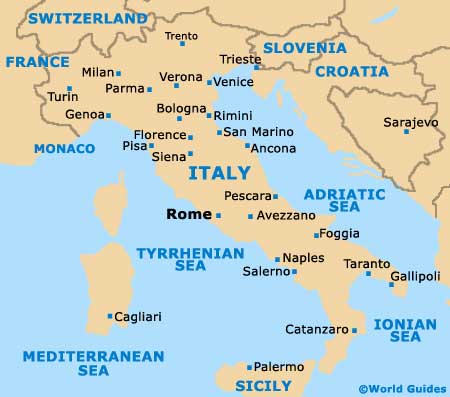


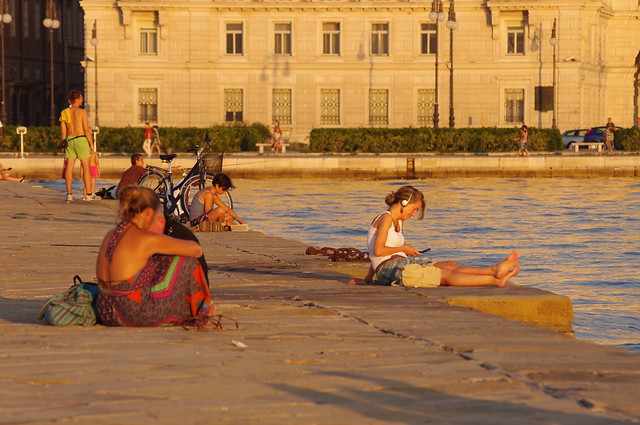
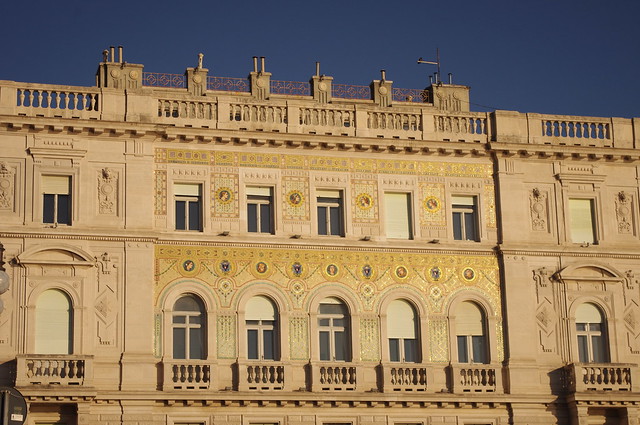
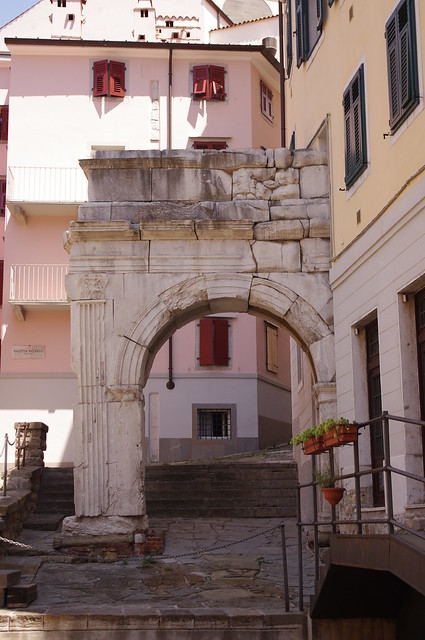
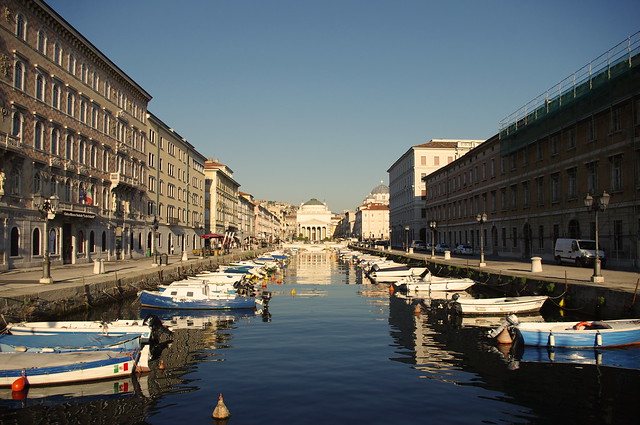

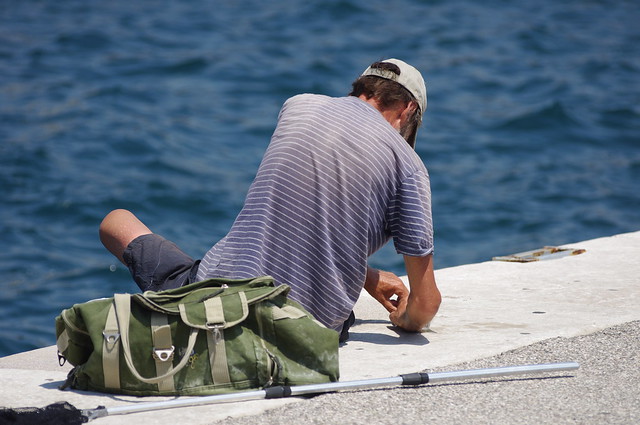
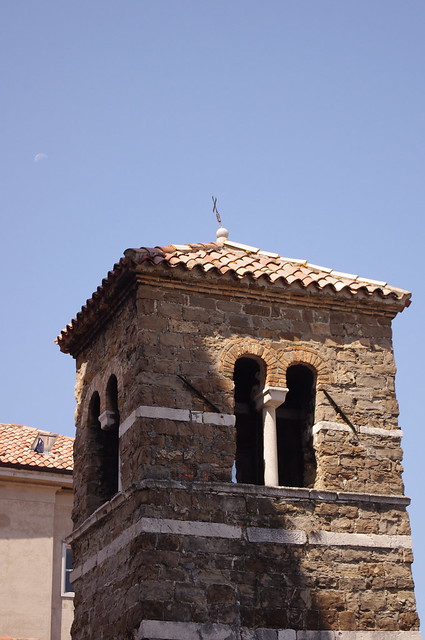






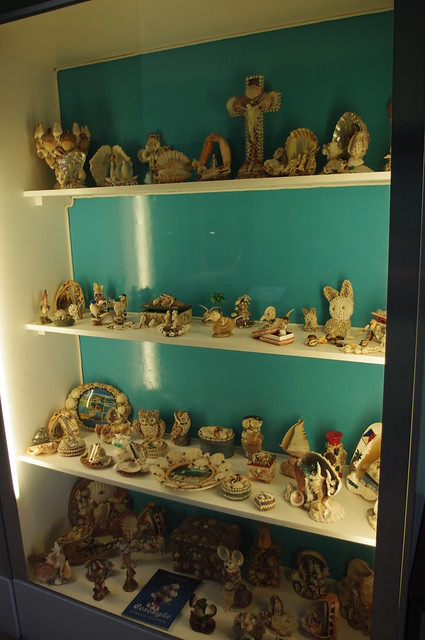
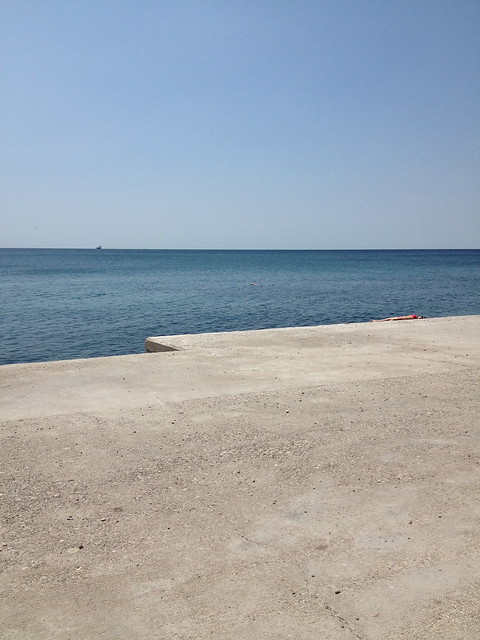




Thanks for writing such a good article, I stumbled onto your blog and read a few post. I like your style of writing...
ReplyDeleteboat tours sardinia